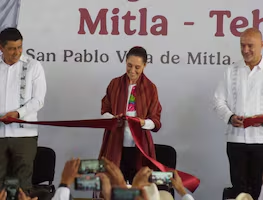Más Información

Sheinbaum asegura que economía mexicana “está bien” gracias a la 4T; inaugura carretera Mitla-Tehuantepec en Oaxaca

“Que el miedo no nos paralice”: Claudio Ochoa narra sus coberturas más desafiantes en exclusiva para suscriptores de EL UNIVERSAL

TEPJF abre incidente de incumplimiento contra Comité del Poder Judicial; prevé medidas para apremiar proceso

INE aprueba en comisiones boletas para jueces de distrito y magistrados de circuito; así estarán divididas
Four out of 10 young people in Mexico live in poverty
, mostly due to the low quality of the education system, a lack of social-emotional ability development, school drop-outs at the middle and higher levels, and a lack of job opportunities, according to the National Council for Evaluation of Social Development Policy (Coneval) .
When presenting a report on youth workforce development, the government body indicated that the rigidity of the job market, high dismissal costs, and high payroll taxes have had a negative effect on the creation of formal employment for young people.
In the document, Coneval informed that young people represent around 25% of the country’s population , since during the first quarter of 2018 , there were approximately 31.1 million young people of between 15 and 29 years of age , which represented 29.3% of the Economically Active Population (PEA) .
Coneval described that 42.9% of young people in Mexico lived in poverty conditions. Out of said amount, 54.1% had a job, 4.3% were unemployed, and 41.5% were non-economically active .
By type of locality –rural or urban-, the government body found a similar distribution among young people living in poverty.
“In 2016 , in urban communities, 10.2% of economically active young people in poverty conditions had direct access to social security . However, only 2.9% of young people in rural communities had access to said services .
“As for social security indicators, the most recurrent benefit among young people is access to healthcare, however, there is a very low coverage. In urban areas, healthcare reaches less than 20% of economically active youth , while in rural areas, it reaches less than 5% ,” the document states.
In the same vein, the institution assured that Mexico was undergoing a process of demographic transition characterized by an increase in the middle of the population pyramid, which represents the youth population.
“This demographic structure entails very important challenges, such as providing education and quality employment for young people while guaranteeing their future access to social security so that they may live their old age in a dignified manner.”
In view of this situation, the council pointed out that evidence showed that interventions on labor education and training helped young people develop specific professional skills such as job interview abilities, creating a resume, and conducting an efficient employment search .
The study showed that it was fundamental to provide optimal conditions for young people’s transition from school to work. Stressing the importance of assessing the abilities they acquired throughout their academic life, which are likely to determine the type of jobs to which they might have access in the future.
In developed countries such as the United States , interventions meant to increase the demand of jobs through wage subsidies have had positive effects in providing employment for young people.
The study also showed that, based on evidence from other countries, programs that combine subsidies with job and life skills training tend to be more effective, mostly benefiting young people living in poverty conditions in urban areas.
dm







